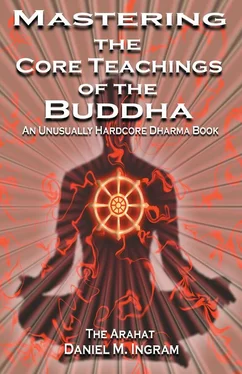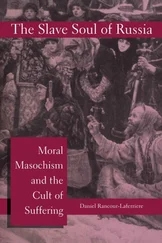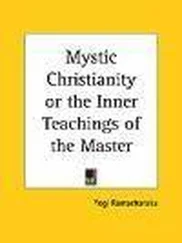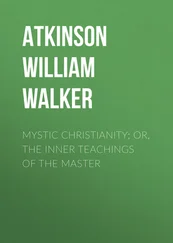Daniel Ingram - Mastering the Core Teachings of Buddha - An Unusually Hardcore Dharma Book
Здесь есть возможность читать онлайн «Daniel Ingram - Mastering the Core Teachings of Buddha - An Unusually Hardcore Dharma Book» весь текст электронной книги совершенно бесплатно (целиком полную версию без сокращений). В некоторых случаях можно слушать аудио, скачать через торрент в формате fb2 и присутствует краткое содержание. Год выпуска: 2009, ISBN: 2009, Издательство: Aeon Books, Жанр: Старинная литература, на русском языке. Описание произведения, (предисловие) а так же отзывы посетителей доступны на портале библиотеки ЛибКат.
- Название:Mastering the Core Teachings of Buddha - An Unusually Hardcore Dharma Book
- Автор:
- Издательство:Aeon Books
- Жанр:
- Год:2009
- ISBN:9781904658405
- Рейтинг книги:5 / 5. Голосов: 1
-
Избранное:Добавить в избранное
- Отзывы:
-
Ваша оценка:
- 100
- 1
- 2
- 3
- 4
- 5
Mastering the Core Teachings of Buddha - An Unusually Hardcore Dharma Book: краткое содержание, описание и аннотация
Предлагаем к чтению аннотацию, описание, краткое содержание или предисловие (зависит от того, что написал сам автор книги «Mastering the Core Teachings of Buddha - An Unusually Hardcore Dharma Book»). Если вы не нашли необходимую информацию о книге — напишите в комментариях, мы постараемся отыскать её.
Mastering the Core Teachings of Buddha - An Unusually Hardcore Dharma Book — читать онлайн бесплатно полную книгу (весь текст) целиком
Ниже представлен текст книги, разбитый по страницам. Система сохранения места последней прочитанной страницы, позволяет с удобством читать онлайн бесплатно книгу «Mastering the Core Teachings of Buddha - An Unusually Hardcore Dharma Book», без необходимости каждый раз заново искать на чём Вы остановились. Поставьте закладку, и сможете в любой момент перейти на страницу, на которой закончили чтение.
Интервал:
Закладка:
Those of Third Path have shifted their understanding of what progress is from those of Second Path, and have begun to see that it is 280
Models of the Stages of Enlightenment about perceiving the emptiness, selflessness, impermanence, luminosity etc. of sensations in daily life and begin to see that they have the ability to do this. This can be a long, developmental process from the first time they notice this to it becoming a nearly complete experience. Thus, Third Path tends to be a long path, though it doesn’t have to be.
At the beginning of Third Path, most practitioners think: “I’ll just complete more cycles of insight, like I did before, and this will do the trick.” They don’t tend to understand what it is they have attained all that well yet, nor its deeper implications. By the mature stage of Third Path, which can take months to years to show up, the practitioner is more and more able to see the emptiness, selfless, centerlessness, luminosity, etc. of phenomena in real-time, so much so that it can be very difficult to notice what artificial perceptual dualities remain.
As they cycle, they will enter new territory, possibly causing some uncertainty or instability, and with each Review phase they tend to really feel that they have done it until they begin to notice the limits of their practice. There can be this nagging something in the background that things aren’t done, and yet figuring out exactly what the problem is can be very slippery. It is a bit like being in the stages before stream entry, trying to figure out what exactly needs to be done. They need to notice something that has nothing to do with the cycles, to finally untangle the knot of perception at its core, but doing this can be a real trick. It is a very strange place, as one seems to know the dharma all the way to the end and yet somehow it just isn’t quite enough. In that vein, it is interesting to note that I wrote the vast majority of this book while I was some sort of anagami, and on reflection I got just about everything right.
My emphases are slightly different now, but the basics are all the same.
As things progress, anagamis begin to tire of the cycles to a small or large degree and begin to look to something outside of them or not related to them for the answer to the final question. Finally, the cycles of insight, the states of concentration, the powers, and all the other perks and prerogatives of their stage of awakening or concentration abilities (if they developed them) hold no appeal and only lead to more
unsatisfying cycles.
I completed around 27 full, complete insight cycles with mind-blowing A&P Events, Ass-kicking Dark Nights, Equanimity phases, and 281
Models of the Stages of Enlightenment
what seemed to be brand new, fresh Fruitions and Review phases between third and fourth path. There is nothing special about that number, both because it is just a guess and because of the reasons I stated when describing the phenomena of Twelfth Path. The later cycles got faster and faster, so that by the end it seemed I was whipping one out every few weeks or even every few days, but they still seemed to be leading nowhere.
It was only when I had gotten so sick of the cycles and realized that they were leading nowhere that I was able to see what has nothing to do with the cycles, which also wasn’t anything except a strange untangling of the knot of perception of them. The cycles, for better or worse, have continued just the same. Thus, there is not much point in counting cycles or paths, as they don’t necessarily correlate well with anything past the first two or three, and issues of backsliding can really make things complex, as I explained earlier.
Finishing up my Revised Four Path Model, arahats have finally untangled the knot of perception, dissolved the sense of the center point actually being the center point, no longer fundamentally make a separate Self out of the patterns of sensations that they used to, even though those same patterns of sensations continue. This is a different understanding from those of Third Path in some subtle way, and makes this path about something that is beyond the paths. This is also poetically called the opening of the Wisdom Eye. What is interesting is that I could write about this stage quite well when I was an anagami, but that is a whole different world from knowing it like arahats know it.
The Wisdom Eye may seem to blink initially. It may go through cycles of flashing open just after a Fruition and then slowly fading over a few hours (at least on retreat) as each round of physical sensations, then mental sensations, then complex emotional formations, then lastly fundamental formations such as inquiry itself move through and become integrated into this new, correct and direct perception of reality as it is. Review cycles may occur many times during each flash, but when the eye is open they seem rather irrelevant in comparison to keeping the level of clarity and acceptance high enough to keep the eye open. When the eye fades and the knot of perception seems to retie itself, the familiar insight cycles may seem like pure drudgery, with the focus 282
Models of the Stages of Enlightenment drifting back to getting lost in the cycles and then gradually shifting again to getting clear enough to get the eye to open again. The themes that occupy center stage go through a cycle that is very much like a progress cycle.
Finally, the Wisdom Eye cycles and insight cycles all converge, and the thing stays open from then on, which is to say that at that point it all seems the same whether or not the eye is open, which it actually was.
That being seen, nothing can erode or disturb the centerlessness of perspective. Done is what is to be done, and life goes on. That there are arahats who have opened the Wisdom Eye but had it fade and those who have opened it and had it stay open is rarely mentioned but worth knowing.
For the arahat who has kept the thing open, there is nothing more to be gained on the ultimate front from insight practices, as “done is what is to be done”. That said, insight practices can still be of great benefit to them for a whole host of reasons, there is a ton they can learn just like everyone else about everything else there is to learn. They can grow, develop, change, work and participate in this strange human drama just like everyone else. Practicing being mindful and the rest still helps. They also cycle through the stages of insight, as with everyone above stream entry, so doing insight practices can move those cycles along.
A SIMPLE MODEL
In earlier versions of this work, I had a model called The Heart Sutra Model. The Simple Model is the less mysterious, stripped down version of that earlier model, though in its essence it is the same. While in one sense it is also rephrasing of the Revised Four Path Model, as it has no numbers, and is free of the traditional names, it has some advantages over that terminology.
I present this somewhat novel model here because it focuses on real insight directly and treats any emotional benefits of this as side effects.
Further, there are often too many cycles of insight before arahatship, making the Four Path model troublesome. This phenomena of too many cycles (which I will sometimes call “paths” with a lowercase “p”) between each of the Four Paths gets worse as one works towards final awakening. As Bill Hamilton put it, and I have learned the hard way,
“The arahat fractal is vast.”
283
Models of the Stages of Enlightenment
The Simple Model does not reinforce fascination with content, nor with life denying ideals or limited emotional range models in the way that the traditional Four Path Model often does. It does not tempt one to count paths. It keeps the focus on precise inquiry into the truth and one’s experience of it or lack thereof.
Читать дальшеИнтервал:
Закладка:
Похожие книги на «Mastering the Core Teachings of Buddha - An Unusually Hardcore Dharma Book»
Представляем Вашему вниманию похожие книги на «Mastering the Core Teachings of Buddha - An Unusually Hardcore Dharma Book» списком для выбора. Мы отобрали схожую по названию и смыслу литературу в надежде предоставить читателям больше вариантов отыскать новые, интересные, ещё непрочитанные произведения.
Обсуждение, отзывы о книге «Mastering the Core Teachings of Buddha - An Unusually Hardcore Dharma Book» и просто собственные мнения читателей. Оставьте ваши комментарии, напишите, что Вы думаете о произведении, его смысле или главных героях. Укажите что конкретно понравилось, а что нет, и почему Вы так считаете.












